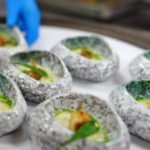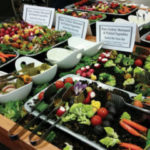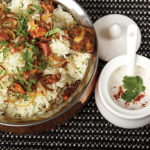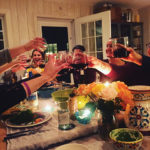
I had hoped that meeting Lord and Lady Dunleath of Northern Ireland’s Ballywalter Park — the speakers and guests of honor at a Tourism Ireland luncheon on March 21 at The 21 Club in Manhattan — would help ease my withdrawal now that “Downton Abbey” is over. And satisfyingly enough, their home, an Italianate Palazzo–style historic house and estate that has been in the same family for 170 years, is just as jaw-dropping as Highclere Castle. And as much as I loved the Earl and Countess of Grantham, our group quickly warmed to the Lord and Lady Dunleath (Brian Mulholland and his Danish wife, Vibeke Lunn), a charming and approachable couple that have made Ballywalter Park available for one-of-a-kind corporate events.

After Lady Dunleath, who goes by “Vibse,” mentioned to our group that she is a food historian, I made a beeline for her at the end of the meal to hear more. Vibse told me that her interest in food history probably began when she came to London in 1973 while working for Scandinavian Airlines — when British cuisine, she said, “was at its worst.” Most unappealing of all, she recalled, was the “foam-rubber white bread,” which stuck like glue to her palate. “England is the first industrialized nation in the world,” she said, “and it applied industrial processes to everything” — including bread-making. “A bad idea!” she added.
Coming from Denmark where “there was a baker on every corner,” Vibse went back to university specifically with the idea of researching why the English gave up their culinary traditions, but more generally to take up a niche interdisciplinary field — food history — that examines the cultural, economic, environmental, and societal impacts of food. She soon formed a small company called “Primary Sauces” (a play on historians’ hunt for primary sources) as well as her own bread line.
At Ballywalter Park, Vibse uses her background to create event menus and presentations that have a historical foundation. “We were lucky enough to find old menus [at Ballywalter Park that date] right back to the 1890s,” she said, “so we could see how my husband’s ancestors had dined. When a DMC rings up and says, ‘We want a buffet,'” Vibse said, she can recreate a meal for the group based on what was served at Ballywalter Park more than a century ago.
Buffets appeal to Vibse for practical as well as historic reasons. “I don’t like people staggering around my beautiful floors, with food and plates and heels. It’s an accident waiting to happen,” she said. “Instead, you make a buffet on the table, because our ancestors … before the invention of the cook stove, everything was put on the table. Some was warm, some was cold, some was made three days ago.” If the group wants to learn about the menu’s history, Vibse is happy to oblige, but she’s “not going to impose myself if they’re not interested,” she said. “What it’s all about is putting something really delicious in front of them.”

We ended our conversation where we had begun: all about the bread. In connection with Tourism Northern Ireland’s theme for 2016 — The Year of Food and Drink — Vibse is working with a farmer friend who grows wheat. She’s hoping to develop a new kind of wheaten bread.




